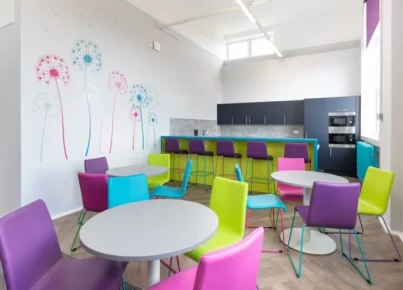Introduction
In today’s fast-paced world, primary education plays a vital role in shaping young minds for their future lives. One integral aspect of this educational process is the primary assembly, which often serves as a space for children to showcase their talents, learn valuable life lessons, and bond with classmates. This article will delve into the importance of going the extra mile in primary assemblies and discuss how educators can create an inclusive and stimulating environment for their students.
The Importance of Primary Assembly
Primary assemblies are significant for several reasons, but perhaps the most critical role they play is nurturing school spirit and fostering a sense of community among students. During assemblies, children have the opportunity to not only come together as a whole school unit but also interact with peers from other classes. This dynamic environment aids in developing essential social skills, such as collaboration, empathy, and understanding different perspectives.
Moreover, these gatherings often touch on various relevant topics – from environmental issues to cultural awareness – consequently serving as powerful learning tools. They provide teachers with an optimal platform to communicate important messages that resonate with every student present.
Going the Extra Mile
As educators, it’s crucial to make an extra effort when planning and executing primary assemblies to ensure they inspire and engage every student involved. Here are some ways you can achieve this:
1. Diversity and inclusion: It is essential to prioritize diversity and inclusion in all aspects of schooling, including assemblies. Invite speakers from different backgrounds or experiences to share unique stories and perspectives with your students. This encourages students to appreciate different cultures and recognize the importance of respecting one another’s individuality.
2. Encourage active participation: Traditional primary assembly formats often involve sitting quietly as information is presented to them. By encouraging students’ active involvement – through debates, drama presentations, or interactive games – educators can create an engaging atmosphere that resonates more deeply with children.
3. Tailor content accordingly: Children come from diverse backgrounds, so it’s crucial to accommodate varying levels of understanding and prior knowledge when discussing any topic. Break down complex subjects into simpler concepts, or allow students to explore topics in greater depth based on their comprehension levels.
4. Recognize student achievements: Assemblies are a great opportunity to showcase and celebrate the hard work and achievements of your students. Acknowledging their efforts publicly helps instill confidence in their abilities, fosters a healthy sense of competition, and motivates their peers to excel.
5. Follow up after the assembly: To ensure a long-lasting impact, follow up on the outcomes of primary assemblies with classroom activities or discussions. This deepens students’ understanding, encourages them to reflect on the values imparted, and helps them translate lessons learned to real-life situations.
Conclusion
Primary assemblies play a significant role in shaping children’s perception of themselves, others, and society at large. Going the extra mile in organizing engaging, thoughtful, and inclusive assemblies can leave a lasting impact on young lives and contribute greatly to their academic and social growth. By creating meaningful experiences for students during these gatherings, educators prepare them for a bright future, equipped with both knowledge and an understanding heart.




